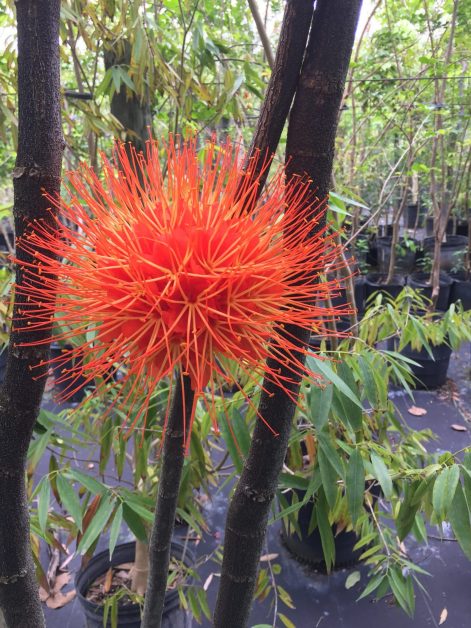Brownea ariza a Crowd-Pleaser
You might say that Brownea ariza comes from a good family. That family is the Fabaceae, or legumes, whose edible representatives include beans and peas. Browneas, though, are known for their beauty, and B. ariza is a standout in that group. Native to northern South America, this small tree first catches one’s eye with its unusual habit of foliation: New leaves emerge pale and droopy, but soon harden to a more vigorous look. Some botanists speculate that this habit is a mechanism to discourage predation of tender new growth.
Commonly known as Scarlet Flame Bean or Mountain Rose, B. ariza is a medium-sized tree, maturing to 20-25 ft. It is happiest in soils that range from mildly alkaline to mildly acidic, and it appreciates abundant moisture, although it can handle drying out between waterings during the cooler months. The wood of this species is quite dense and therefore termite-resistant. A chemical found in the bark of B. ariza is said to have medicinal properties, particularly the ability to slow or stop bleeding.
Ornamentally, the big payoff of B. ariza is its flowers. Often appearing when the plants are just 3-4 years old, the flowers emanate directly from the stem or woody branches, a trait known as cauliflory. Each inflorescence is not only large, a 4-5 in. head, but also intensely colorful in the orange-red range, making it attractive to butterflies and bees. Stamens protruding (exserting) from the inflorescences give them a bit of a starburst appearance. Though the flowering is fairly short-lived, it is spectacular.
This tree is available at Richard Lyons Nursery in 15 gal. containers
- Brownea ariza (Scarlet Flame Bean)

